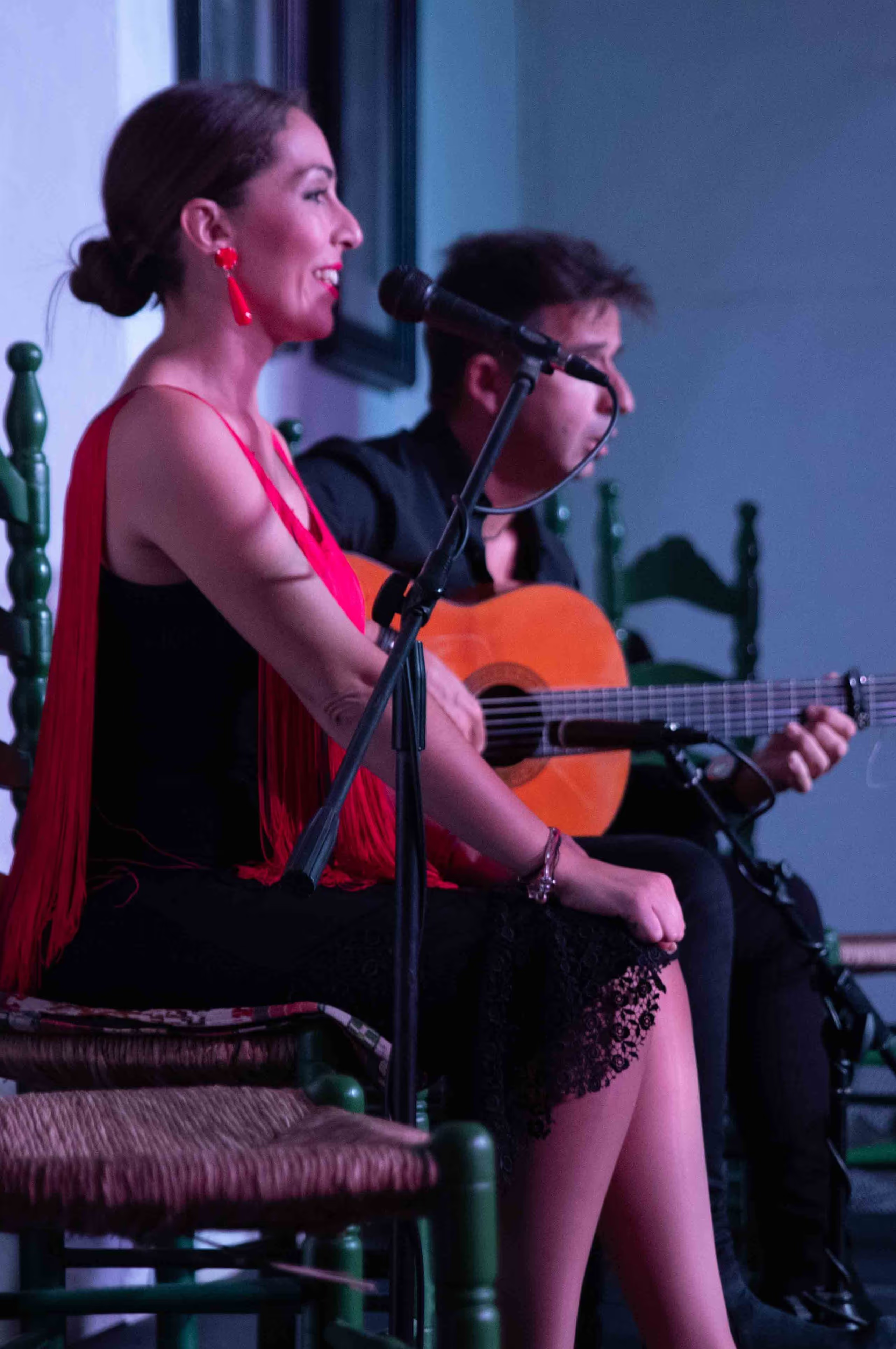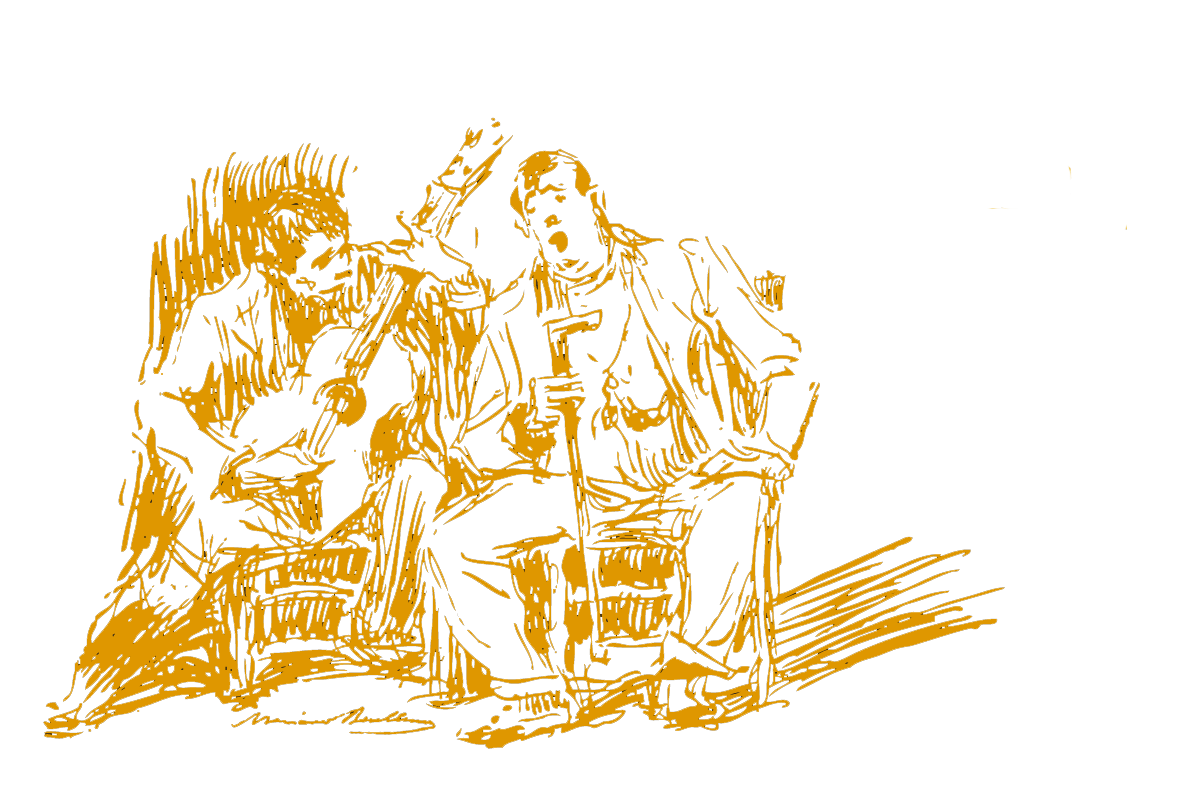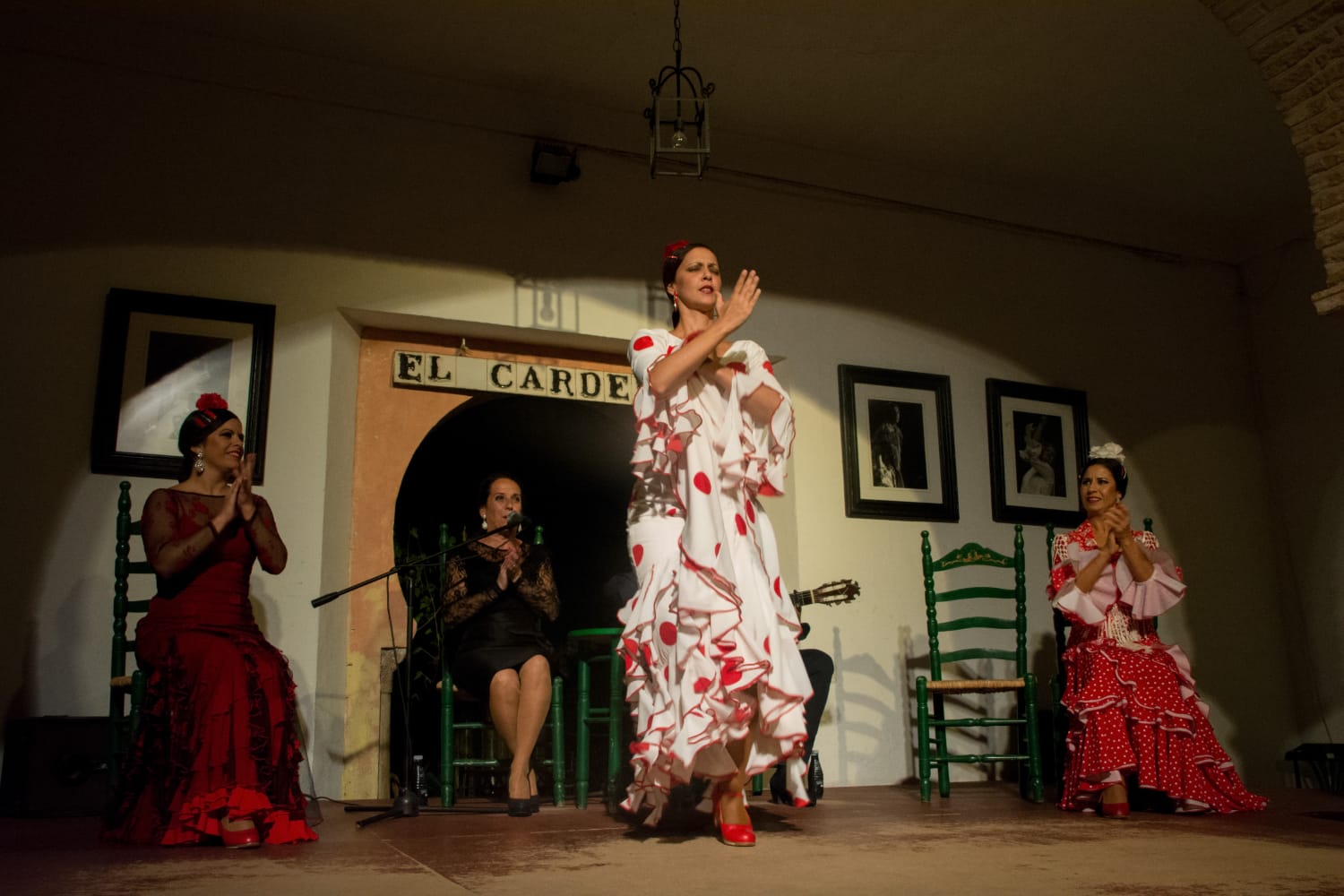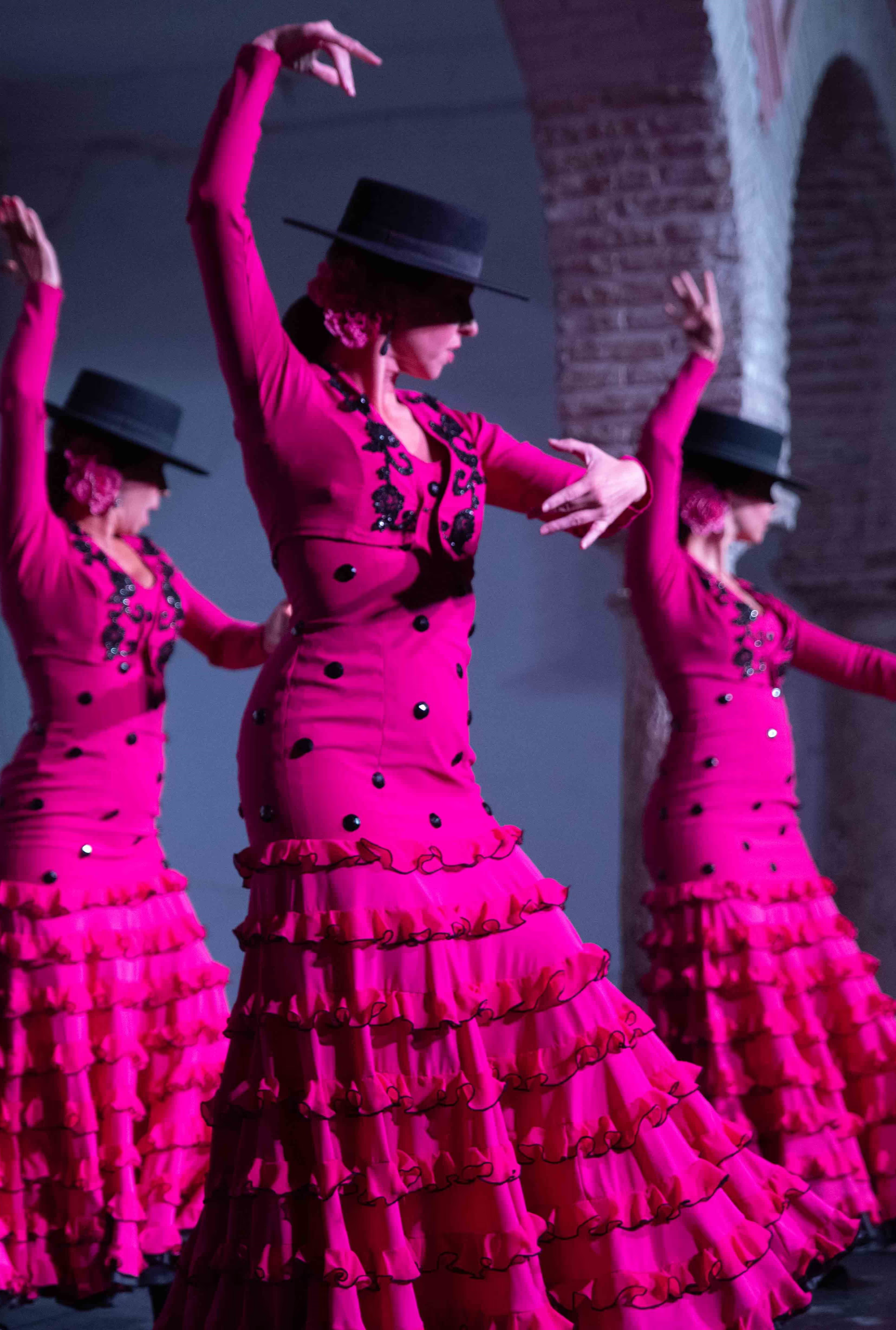

In flamenco, the palos are the different styles or musical forms that structure the singing, the touch and the dance. Each stick has its own rhythm (compas), melodic mode, lyrical structure, and often an emotional charge or specific geographical origin.
From the flamenco tablao el Cardenal, all our shows program a daily selection of each of them throughout the night.
It is the jondo song par excellence, a torn and tragic scream that alludes to complaint, crying and pain.

Dramatic and deep sing of the group of tonas, of difficult execution, is interpreted "a cappella" with the only accompaniment of the compass that makes the hammer on the anvil.

Originally from Cadiz, it is one of the oldest styles and of greater flamenco tradition. The dance, full of rhythm and luminous, honours its name: joys. Its accompaniment of the characteristic "tirititran, tran, tran, ..." makes it perfectly recognisable. The execution of the dance is formally composed of a more or less fixed structure of elements: entrance, walk, silence, the brush (reserved for the zapateado), to conclude with a rant or exit by chufla.

The Taranto is the only danceable stick of mineral origin. It is related to the Fandango and its execution has great rhythmic possibilities. Of melancholic and sentimental character, it was the very personal Carmen Amaya, towards the 40s of the 20th century who popularised it, managing to extract its maximum artistic expression. The dance for Tarantos is usually included in all the repertoires of the great dancers, for its ability to transmit the emotion and the goblin of flamenco.

It is one of the richest palos in flamenco, perhaps the most versatile and with the greatest melodic nuances. It is a solemn dance, where the feeling comes to the fore, with majestic movements, where the arms, hip undulations and waist breaks take on a vital expressive importance. The progressive increase in the speed and complexity of the zapateado in the central part of the dance is one of its structural elements.
